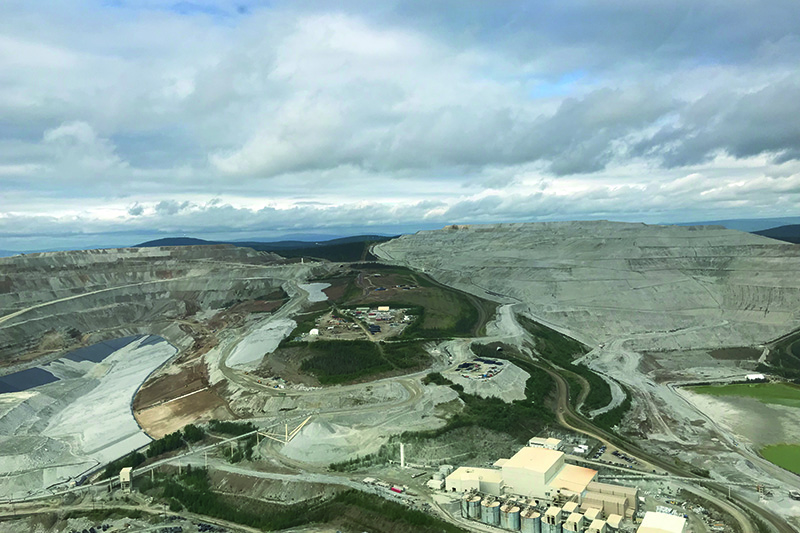Crushed rock captures higher levels of CO2
Carbon can be captured into waste rock powders during mining operations and aggregate production, say researchers at Strathclyde University, UK.

They report that rock crushing releases energy instantly as charged particles and photons when the chemical bonds break, and they can use this mechanochemical energy to trap CO₂.
The research shows that if silica-rich rocks such as granite and basalt are crushed in CO₂ gas instead of air, the CO₂ can become permanently trapped, via a process of chemical sorption, within the crystal lattice of the crushed particles.
Previously, researchers have investigated mechanochemical CO₂ trapping as metal carbonates through the grinding of magnesium- and calcium-rich minerals (e.g., olivine, wollastonite and diopside) at ambient temperatures within an atmosphere of pure CO₂. This achieves trapping efficiencies of 5.4-123mgCO₂/g.
However, pure mineral deposits are relatively rare. The Strathclyde researchers explain that 60-93% of the mechanochemically trapped CO₂ in the resulting mineral powders is soluble, which would necessitate dry storage for carbon capture utilisation and storage (CCUS) and restrict subsequent use.
They suggest their process occurs independently of the presence of magnesium or calcium, with the trapped CO₂ insoluble and stable up to temperatures of ~300°C. The security of storage is said to be like carbon within limestone, which is stable unless heated to very high temperatures (>300°C) or is acid digested.
Professor Rebecca Lunn, Head of the Centre for Ground Engineering and Energy Geosciences at Strathclyde, says, 'We then determined the leachability and thermal stability of the resulting powders...We showed that during mechanochemical CO₂ trapping, polymineralic rocks…outperform individual minerals in terms of the amount of insoluble CO₂ captured, making polymineralic rocks viable substrates for CCUS.
'...in ambient temperature conditions, basalt and granite can trap 15.4mgCO₂/g and 13.9mgCO₂/g, respectively, when dry milled in gaseous CO₂…mechanochemical trapping is via the chemical adsorption of carbon within the mineral lattice.'
Comparing the carbon in the polymineralic systems (basalt and granite) with that in pure mineral systems, they reveal that polymineralic rocks trap significantly more CO₂ than expected from their mineral composition.
They have demonstrated that while individual minerals retain 7-40% of their trapped carbon when mixed with water, polymineralic rocks retain 96%-98% of the carbon trapped.
Strathclyde says, 'Existing crushing processes can be adapted to trap CO₂, hence no extra energy is required.'
For every 100Mt of saleable crushed aggregate, 0.4MtCO₂ of thermally stable and insoluble CO₂ can be trapped.
The mining and quarrying industries worldwide crush at least 42Bt of silicate-rich rocks annually.
Based on current aggregate production rates, Strathclyde estimates this technology could capture ~0.5% of global CO₂ emissions, or 175MtCO₂ annually – equivalent to the CO₂ trapped by a mature forest the size of Germany.
Lunn says, 'We deliberately did not apply for a patent for this basic CO₂ capture technology…We want this research to significantly increase the chances of global success in meeting 2050 net-zero carbon targets.”'They hope to scale-up the process during the next three years. If the next research stage is a success, their industrial partners have agreed to freely share the IP.







